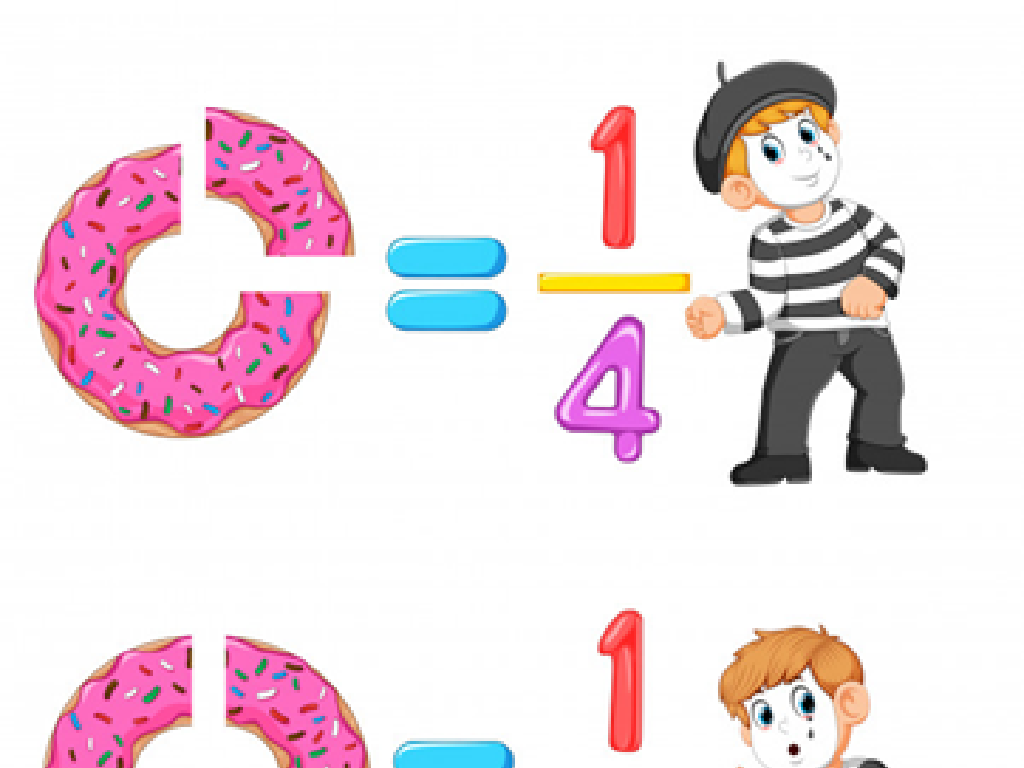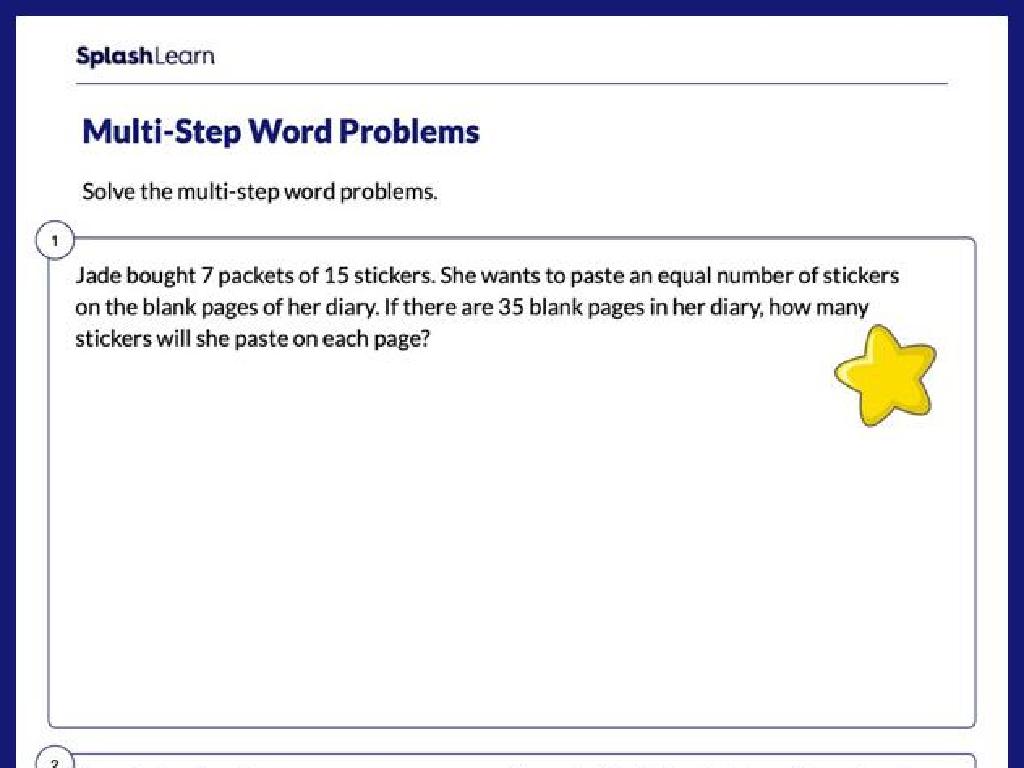Complete The Opinion-Reason-Example Table
Subject: Language arts
Grade: Second grade
Topic: Opinion Writing
Please LOG IN to download the presentation. Access is available to registered users only.
View More Content
Welcome to Opinion Writing!
– Learn what an opinion is
– An opinion is what you think or feel about something
– Understand why opinions matter
– Sharing opinions helps us communicate and learn from each other
– How to express your thoughts
– Use ‘I think’ or ‘I believe’ to start your opinion
– Practice sharing opinions
– We’ll use an opinion-reason-example table to practice
|
Today’s lesson introduces students to the concept of opinion writing, an essential part of language arts. Begin by explaining that an opinion is someone’s personal thoughts or feelings about a topic, and it’s different from a fact, which is true for everyone. Emphasize the importance of expressing one’s thoughts as it helps us understand each other better and can persuade others. Teach students to use phrases like ‘I think’ or ‘I believe’ to clearly state their opinions. To practice, students will complete an opinion-reason-example table where they will write their opinion, give a reason for it, and provide an example to support it. This activity will help them organize their thoughts and communicate more effectively.
Understanding Opinions
– What is an opinion?
– It’s your own thoughts or feelings
– Opinions vary and that’s fine
– Examples of opinions
– Favorite color, best food, fun games
– Respecting different opinions
– It’s important to be kind even when we disagree
|
This slide introduces the concept of opinions to second-grade students. Begin by explaining that an opinion is what someone thinks or feels about something, and it can be about anything! Emphasize that everyone has their own opinions and that they can be different from others, which is completely okay. Provide relatable examples such as favorite colors, foods, and games to help them understand the concept. Lastly, stress the importance of respecting everyone’s opinions, even when they differ from our own. Encourage students to think of their own opinions and be prepared to discuss why they think or feel that way, fostering a respectful and open classroom environment.
Understanding Opinions and Facts
– Opinions are personal views
– Facts are universally true
– Opinions vs. Facts
– Opinions can differ, facts stay the same
– Example: Birds and beauty
– Fact: All birds have wings. Opinion: Parrots are prettiest.
|
This slide aims to help second-grade students distinguish between facts and opinions, which is a crucial skill in opinion writing. Begin by explaining that a fact is something that is true for everyone and can be proven, like ‘Birds have wings.’ Then, discuss opinions, which are personal beliefs or feelings that are not right or wrong, such as ‘Parrots are the most beautiful birds.’ Use the example provided to illustrate the difference. Encourage students to think of their own examples and to understand that while everyone can have their own opinions, facts remain constant regardless of personal views.
Your Opinion Matters!
– Share opinions respectfully
– Use kind words and a friendly voice
– Opinions reveal your thoughts
– Your unique view helps friends know you
– Fun in sharing opinions
– It’s enjoyable to tell others what you think
– Learning from each other
– We discover new things when we listen
|
This slide is designed to teach second-grade students the value of sharing their opinions in a respectful manner. Emphasize the importance of using kind words and maintaining a friendly tone when expressing themselves. Explain that sharing opinions is a way to let others know what they think and feel, making it easier for friends to understand them. Highlight that exchanging opinions can be a delightful activity that leads to learning more about each other’s likes, dislikes, and perspectives. Encourage students to listen actively to their classmates’ opinions as a way to learn and grow. In the next class, students can engage in an activity where they complete an opinion-reason-example table to practice this skill.
Crafting Our Opinions with Reasons and Examples
– Understand the Opinion-Reason-Example table
– It’s a tool to organize our thoughts in writing
– Start with your opinion
– What do you think about the topic?
– Support with a reason
– Why do you think that? Give a reason.
– Conclude with an example
– Can you think of a story or fact that shows your reason?
|
This slide introduces the Opinion-Reason-Example table, a structured approach to opinion writing. Begin by explaining the purpose of the table and how it helps in organizing thoughts clearly. Encourage students to start with a clear opinion statement on a topic. Then, guide them to think of a reason why they hold that opinion. Finally, ask them to provide a concrete example that supports their reason, which could be a personal story or a fact they know. During the class activity, assist students in filling out a table as a group, and then let them try it individually with different topics. This exercise will help them in developing coherent arguments and expressing their opinions effectively in writing.
Let’s Practice Opinion Writing!
– State your opinion clearly
– ‘Ice cream is the best dessert’
– Give a reason for your opinion
– ‘It is sweet and has many flavors’
– Provide an example to support
– ‘Chocolate tastes great as an example’
– Share your favorite ice cream flavor
|
This slide is an activity to help students practice structuring their opinion writing. Start by explaining that an opinion is what someone thinks or feels about something. Then, guide them to give a reason why they feel that way. Next, ask them to provide a specific example that supports their reason. For instance, if they think ice cream is the best dessert, they could say it’s because it’s sweet and comes in many flavors, like chocolate, which they love. Encourage students to think of their own favorite flavor and why they like it. This exercise will help them understand how to build a strong opinion statement with supporting reasons and examples.
Group Activity: Opinion Tables
– Break into small groups
– Fill out opinion-reason-example table
– Write your opinion, why you think so, and an example
– Choose a topic for discussion
– Suggestions: ‘The best pet’ or ‘The best season’
– Share your table with the class
– Each group will present their table to the class
|
This activity is designed to teach students how to structure their opinions with supporting reasons and examples. Divide the class into small groups to encourage collaboration. Each group will choose a topic and complete an opinion-reason-example table. For instance, if the topic is ‘The best pet,’ students should state their opinion (e.g., ‘Dogs are the best pets’), provide a reason (e.g., ‘because they are loyal’), and give an example (e.g., ‘like how my dog always greets me when I come home’). After completing the table, groups will share their opinions with the class, fostering a discussion on how different opinions can be supported by various reasons and examples. This will help students understand the importance of backing up their opinions with clear reasoning and specific instances.
Sharing Our Opinion Tables
– Each group presents their table
– Listen to classmates’ opinions
– Discuss reasons behind opinions
– Why do you think that? Can you explain?
– Practice respectful listening
– Remember, every opinion is valuable
|
This slide is designed for a class activity where students will share the opinion-reason-example tables they have completed. Each group will take turns presenting their table to the class. It’s important to foster an environment of respect and kindness, where every student feels comfortable sharing their thoughts. Encourage active listening, where students pay attention to their peers’ opinions and the reasons behind them. Prompt students to ask questions like ‘Why do you think that?’ to understand their classmates’ perspectives better. Reinforce the idea that every opinion is valuable and deserves to be heard without judgment. This activity aims to develop students’ speaking and listening skills, as well as their ability to engage in civil discourse.
Class Activity: Write Your Own Opinion!
– Choose a topic you love
– State your opinion clearly
– What do you think about the topic?
– Give reasons for your opinion
– Why do you think that? List your reasons.
– Provide examples for each reason
– Can you think of a story or fact that shows your reason?
|
This activity is designed to engage students in the process of opinion writing by allowing them to choose a topic they are passionate about. This personal connection will make the activity more meaningful and enjoyable. Encourage students to express their opinion in a clear sentence. Then, they should list reasons why they hold that opinion. For each reason, they should think of an example, such as a personal experience or something they’ve learned, to support their reason. This exercise will help them understand the structure of opinion writing and how to use reasons and examples to make their writing stronger. Possible topics could include favorite foods, games, animals, or holidays. Teachers should circulate the room to provide support and ensure students are on task.
Wrapping Up: Our Opinions Matter!
– Celebrating our opinion sharing
– Valuing all opinions
– Every opinion is important and unique
– Practice opinion writing
– Use the opinion-reason-example table to help
– Keep learning at home
– Read books, watch movies, and think about what you like or don’t like
|
Today’s class was all about sharing and valuing each other’s opinions. Reinforce the idea that every student’s opinion is important and that there are no right or wrong opinions. Encourage them to continue practicing their opinion writing at home using the opinion-reason-example table as a guide. Suggest that they read books or watch movies and think about what they like or dislike about them, and then write it down using the table format. This will help them articulate their thoughts and provide reasons and examples, which is a key skill in opinion writing. Remember to praise their efforts and progress in expressing their opinions clearly and respectfully.






